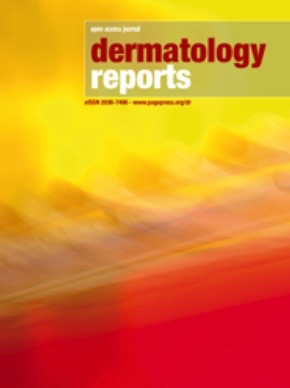Extraocular cutaneous sebaceous carcinoma in a patient with Muir-Torre syndrome: special emphasis on histologic and dermoscopic features
All claims expressed in this article are solely those of the authors and do not necessarily represent those of their affiliated organizations, or those of the publisher, the editors and the reviewers. Any product that may be evaluated in this article or claim that may be made by its manufacturer is not guaranteed or endorsed by the publisher.
Authors
Cutaneous sebaceous carcinoma (CSC) can be classified into periocular and extraocular and can occur as part of Muir-Torre syndrome. It is usually a pink-red or yellow solitary nodule, mainly located in the head and neck region. According to the literature, dermoscopy is characterized in most cases by a yellow color, polymorphic vessels, and ulceration. We performed a review of the literature, and we found 14 papers describing the dermoscopic features of 33 sebaceous carcinomas, to which we added a case that we have recently observed. Compared to the data of the literature and in particular to the latest published reviews, we found that milky-red areas are frequently observed in CSC (47% of the cases) and can be added to the main dermoscopic features for the diagnosis. In our case, histology showed some features that were consistent with a CSC with a secretory pattern, and other features that were instead consistent with a non-secretory pattern. This was probably due to the fact that the lesion we observed was a moderately differentiated and not well-differentiated CSC. The presence of a CSC should always alert the clinician to the possible association with Muir-Torre syndrome, and immunohistochemistry for mismatch repair gene defects can help in the diagnostic pathway.
How to Cite

This work is licensed under a Creative Commons Attribution-NonCommercial 4.0 International License.








